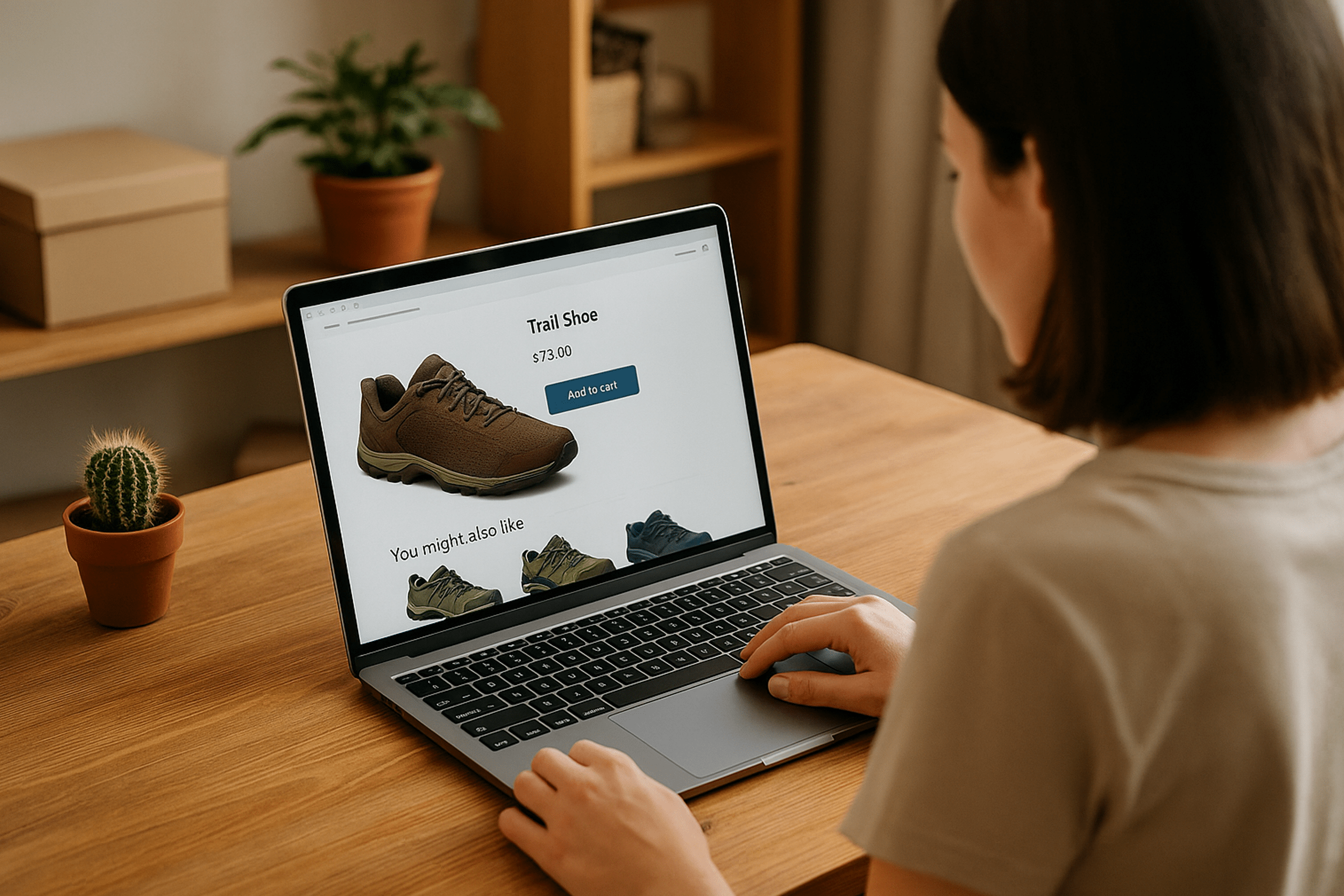Cross selling is one of the easiest and most effective ways to increase sales without adding a single new product to your store. It works by showing customers more of what they already want, at exactly the right time. However, for it to be effective, your store has to make sense. That means focusing on one product niche and building your catalog around a clear purpose. Otherwise, if your store feels random, your cross sells will too.
Why Your Store’s Focus Affects Cross Selling
Here’s something most new sellers miss: Google doesn’t rank general-purpose ecommerce stores anymore. Since the Panda update in 2011, it’s been quietly burying thin, unfocused sites that try to sell everything to everyone. If you want organic traffic, your store needs to focus on a single product niche. That kind of focus builds authority. More importantly, it makes cross selling feel smooth and intentional instead of scattered or salesy.
Trying to cross sell kitchen tools with yoga mats and LED dog collars is a fast way to lose credibility. That kind of mismatch confuses shoppers and tells Google you don’t know your audience. On the other hand, if you run a niche store with 30 related products, cross selling becomes part of the customer experience. It makes the store feel more helpful, not more crowded.
What a Thoughtful Cross Sell Looks Like
Imagine a customer adds a pair of trail shoes to their cart. Your store also offers a lighter option for speed work or a different tread for rainy weather. Recommending one of those makes perfect sense. It’s the kind of add-on that feels useful, not pushy. When your customer sees it, they’re likely to think, “I didn’t know they had that too.” That’s a well-placed cross sell. It raises the order value without disrupting the flow of the buying process.
Start with Manual Cross Selling
Manual cross selling is the best place to begin, especially if you’re a home-based seller with a focused product line. There’s no need for fancy tools at this stage. What you need is logic. You already know what your customers tend to buy together. You know which products are often compared. In many cases, you even know which items are most likely to be missed unless they’re pointed out.
Use Built-In Tools for Better Placement
Fortunately, most ecommerce platforms already support basic cross selling out of the box. If you’re using Shopify, WooCommerce, or BigCommerce, you can add related product blocks right on your product pages. These sections are simple to update and give you full control over which items appear together. No plugin required. Just connect what makes sense. You can also set up small bundles or add cart page prompts with one or two helpful suggestions before checkout.
Bring Visibility to Overlooked Products
Another benefit of cross selling is its ability to move overlooked products. Every store has a few items that deserve attention but don’t get it. Maybe they’re brand new. Maybe they just don’t have eye-catching photos yet. Whatever the reason, these products don’t move on their own.
Attaching those underperforming items to your top sellers gives them instant visibility. When customers see them next to something they already want, they’re far more likely to click. This gives you extra traction without offering discounts or running ads.
Use Cross Selling After the Sale Too
One of the best times to cross sell is after a customer makes a purchase. Most sellers spend all their energy on securing that first order and forget about what comes next. That’s a missed opportunity. Repeat customers are more profitable, and it costs far less to bring them back than it does to acquire someone new.
This is where post-purchase cross selling comes in. Let’s say someone buys your best-selling minimalist running shoe. A week later, they get an email from you with the subject line, “Taking your runs off-road?” Inside, you recommend a trail shoe version with similar features, built for different terrain. That kind of follow-up feels smart, not forced. You’re offering something useful while the customer is still thinking about your brand.
Keep Follow-Ups Simple and Relevant
These emails don’t need to be complex. One short message. One suggested product. One clear reason it matters. That’s all it takes. You can set these up once in your email platform and let them run automatically. No extra effort on your part, just steady, relevant follow-ups that generate additional sales.
This method also helps you better understand your product line. When you sit down and map out logical cross sells, you’ll start to notice which items are strong, which ones need better positioning, and which probably shouldn’t be there. That planning alone can make your store more effective.
Smaller Catalogs Have the Advantage
The smaller your product line, the easier all of this becomes. That’s one of the reasons niche stores often outperform general stores. You don’t need hundreds of items to cross sell successfully. A few strong, related products can work beautifully if they’re aligned and clearly serve the same customer. When you stay in your lane, it becomes obvious what to suggest and when to suggest it.
If your store grows, you can revisit automation later. But starting with manual cross selling keeps you sharp. You’ll learn your products better, understand your customers more deeply, and make more intentional decisions along the way.
Make It Natural and Focused
Cross selling works best when it feels natural. That only happens when your store is clean, intentional, and customer-focused. No tricks. No clutter. Just clear, relevant offers that make the buyer’s decision easier.
Keep it simple. Keep it smart. That’s not just how you increase your average order value. That’s how you build a real business that lasts.

